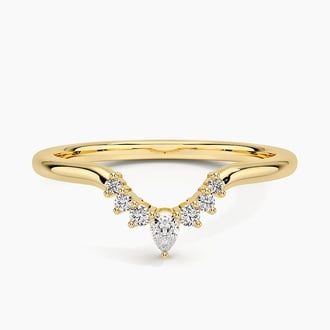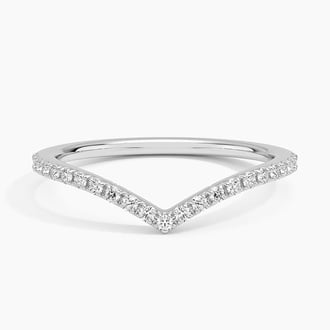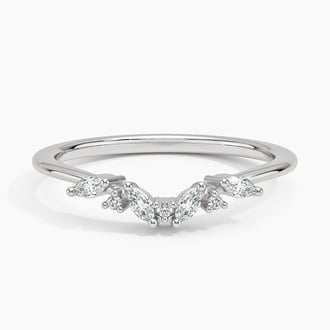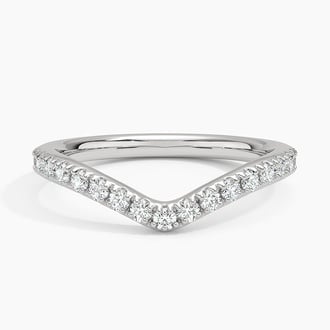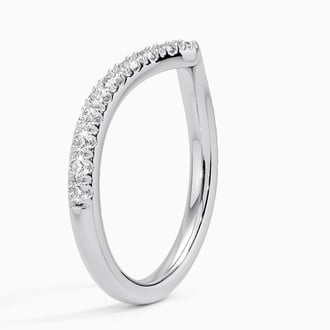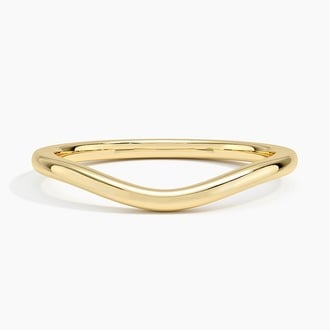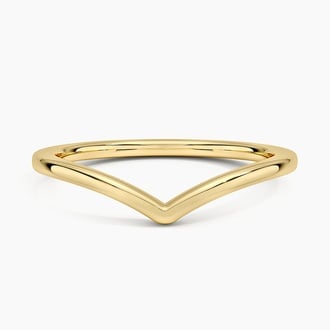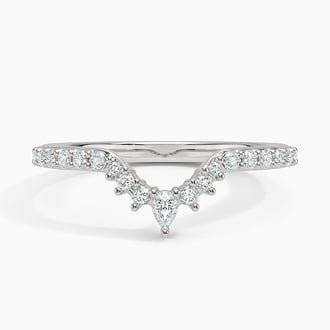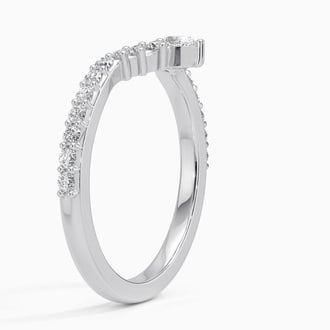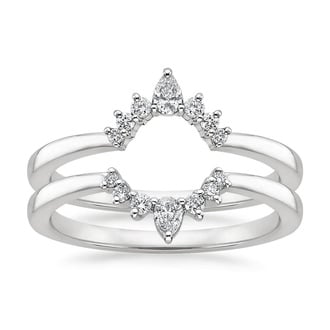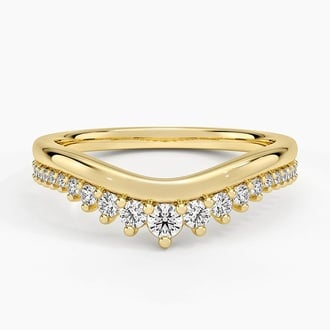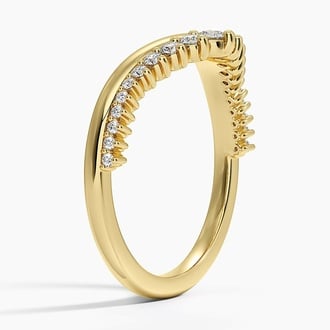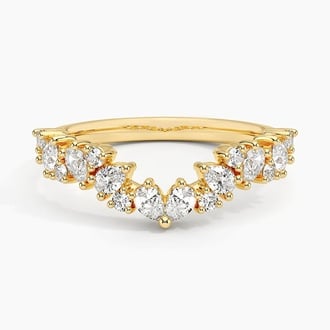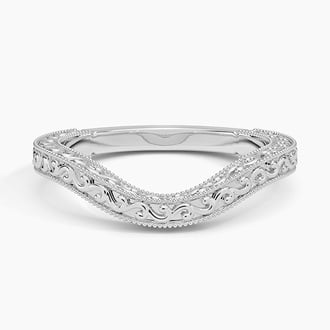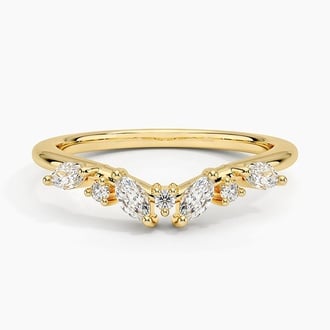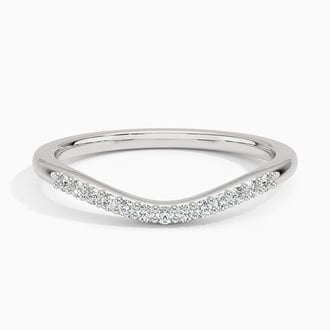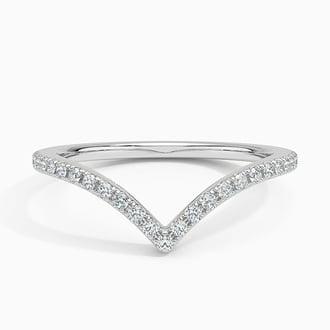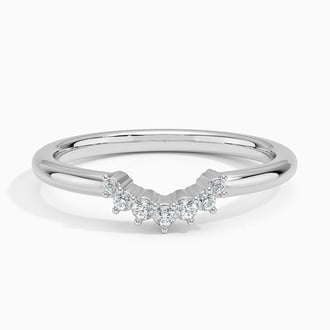A curved wedding band features an extended arc that is crafted to curve smoothly around the center stone of an engagement ring. While straight bands may leave a gap between two rings, curved wedding bands sit perfectly flush against other styles for a cohesive, luxurious look. These rings lend themselves excellently to all types of ring stacks, from chic and simplistic to bold and glamorous.
Our carefully curated collection of curved wedding bands features a diverse assortment of styles that range in design. Some feature strikingly modern plain metal designs that shimmer with lustrous light. Others feature round-cut diamonds that brilliantly gleam, catching the light and the eye. Whichever wedding ring style you are drawn to, a curved wedding band should be a reflection of who you are, pair well with your engagement ring, and represent your one-of-a-kind love story.























